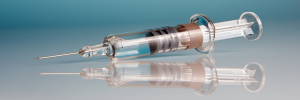Recent news of the medical woes of a number of cosmetic surgery patients has cast a spotlight on the increasingly popular use of fillers for cosmetic augmentation. While the use of facial fillers has become fairly commonplace in the landscape of aesthetic surgery, buttock and less commonly breast augmentation have become the new frontier for fillers.
These stories while similar and increasingly frequent are no less concerning:
- A 27 year old Miss Bum Bum 2012 contestant and tabloid sensation, was hospitalized after developing a necrotizing infection after undergoing hydrogel and PMMA filler to the thigh/buttocks.
- A 32 year old woman dies after undergoing buttock, thigh and breast augmentation via “injectable fillers.” The unlicensed practitioner who performed the procedure was found to have used a combination of Fix-A-Flat, mineral oil, superglue for augmentation.
- A 33 year old undergoes bilateral mastectomy after undergoing silicone injections to her breasts with the goal of non-surgical augmentation.
Buttock augmentation is growing popularity internationally. ASPS statistics suggest that this trend is likely to continue. In 2012, 8,500 procedures were performed domestically rising to nearly 10,000 the following year (16% increase). The percentage of surgeons surveyed who performed the procedure has also risen. As the procedure grows in popularity, so has the prevalence of unqualified practitioners.
The procedure is performed via implant or autologous fat grafts (“Brazilian Butt Lift”). There is no other FDA approved safe method of augmentation. Potential lipo-tourists should, likewise, be wary of other fillers such as hydrogel that may be offered abroad. There are significant risks of injection of these unapproved substances into the body including infection and tissue necrosis. Subsequent removal of these substances is difficult if not impossible.
Breast augmentation via “fillers” is not as commonplace as the ubiquitous “Brazilian Butt lift.” However, the same rules apply. Traditional saline/silicone implants as well as autologous fat are the only FDA approved means of breast augmentation. Surgical candidates should be well informed of the available options as well as the dangers of unapproved or untested techniques often promoted and employed by unlicensed practitioners.
With the numbers of these “botched” cases rising, ASPS has launched a public safety campaign to better inform potential patients of the dangers of unsafe procedures performed by unqualified practitioners.
Two key questions every potential patient should ask:
- Is your surgeon board certified by the American Board of Plastic Surgeons?
- Does your surgeon operate in a fully accredited facility?
For more information: http://www.plasticsurgery.org/articles-and-galleries/do-your-homework.html


